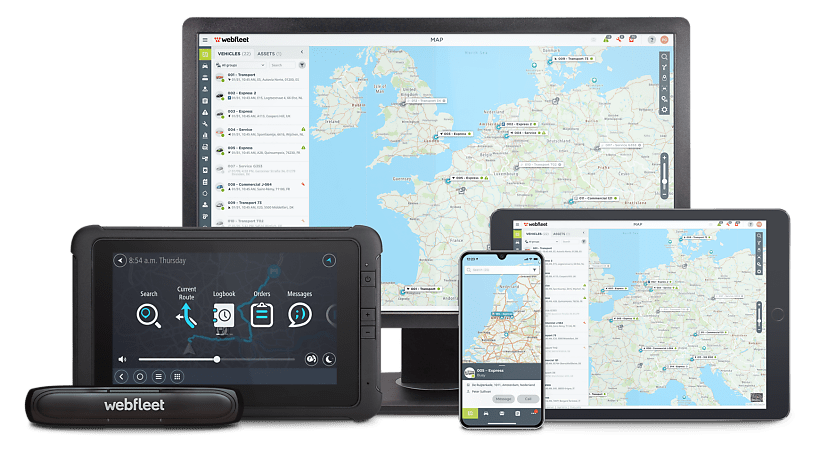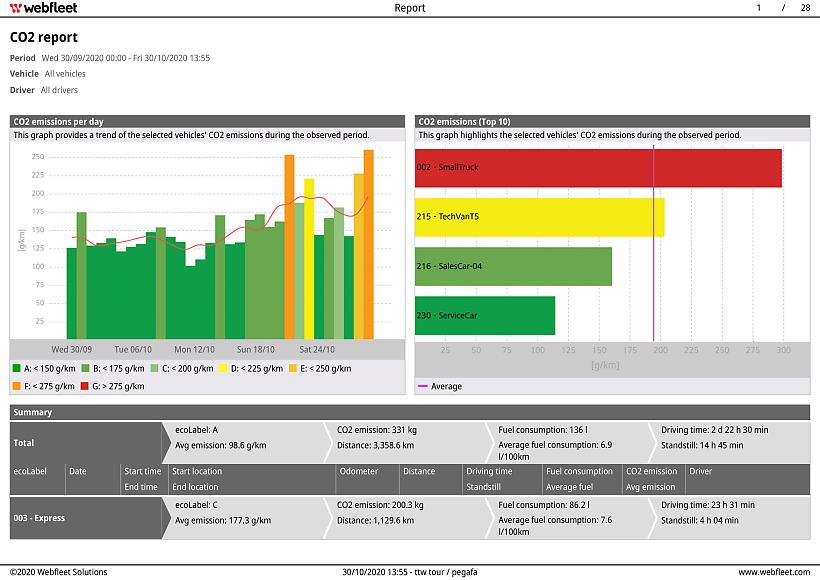In this article, we explain the meaning behind ‘Scope 3 emissions’ and what effect this has on your business operations and reporting. We will also explore how Webfleet can support you with meeting the requirements of transport compliance by helping you report on your fleet emissions.
What are Scope 3 emissions?
Scope 3 is a category of greenhouse gas (GHG) emissions resulting from supply chain activities outside of direct company control, up and down the value chain. Until recently, the focus for companies has been Scope 1 and 2 emissions generated from their own operations. On the other hand, Scope 3 measures emissions from company activities in the value chain, but not the direct emissions of the company’s own operations. The Scope 3 emissions are also known as “indirect emissions” or “value chain emissions.”
These emissions can have a significant impact on a business’s overall carbon footprint and contribution to climate change. Moreover, Scope 3 can be defined by 15 distinct reporting categories covering upstream and downstream activities. Ultimately, not every category will be relevant to your business, therefore conduct a relevance assessment to identify the relevant reporting.
How will Scope 3 affect your business?
Businesses that have a high level of scope 3 emissions may be subject to increased regulatory scrutiny. Additionally, as the economy strives to be more environmentally conscious, companies with high scope 3 emissions may find it difficult to conduct business within the value chain. It is essential that Scope 3 emissions are reviewed and reported to future-proof your business and contribute to reducing emissions throughout the value chain.
How can fleet businesses calculate Scope 3 emissions?
There are three different ways you can calculate emissions from transportation:
- Fuel-based method – The amount of fuel consumed by transport providers in the Supply-chain applied to the appropriate emission factor for that fuel
- Distance-based method – Calculate the mass, distance, and mode of each shipment, then apply the appropriate mass-distance emission factor for the vehicle used
- Spend-based method – To determine the amount of money spent on each mode of business travel transport and applying secondary (EEIO) emission factors
Webfleet’s Driver Performance reports provide the data insights required to support the Fuel-based method for calculating transport emissions. Therefore, with Webfleet, you have insights into goods transportation emissions and mileage covered by your vehicles through operational and reporting solutions.

Decarbonising your operations through Webfleet
Webfleet provides you with a suite of products to support you in the decarbonisation of your fleet operations:
Vehicle Check app
- Firstly, we have the Vehicle Check app. Digitise your drivers’ day-to-day walkaround inspections to ensure their vehicle is road compliant. Consequently, if a driver does not perform checks they are not only risking their safety but also cannot ensure the vehicle can operate at an efficient level. Vehicles with under-inflated tyres, for example, decrease fuel efficiency ultimately increasing the emissions output of the vehicle.
PRO driver terminals
- Secondly, we look into navigation through our PRO driver terminals. Using best-in-class navigation through Webfleet, Fleet Managers can optimise their route planning. The advanced navigation factors in location distance within the time frame, road conditions and remaining driving time (where applicable). Ultimately, the Fleet Manager can make a positive impact on carbon reduction by increasing efficiency and reducing unnecessary vehicle fuel usage.
Optidrive 360
- Thirdly, the driver can receive instant feedback on driving behaviour through our Optidrive 360 scoring. In this instance, a driver can receive feedback identifying a large amount of idling, which negatively impacts his score. Therefore, the driver knows to improve his score he can turn off his engine whilst not moving. Consequently, promoting more eco-friendly driving and empowering the driver.
Electric vehicle solutions
- Finally, Webfleet has a full suite of tools to support you with the transition to an electric fleet. Our advanced EV solution means we can support you in planning, implementing and optimising your electric fleet. Are you thinking about adding EVs to your fleet? A fleet review and EV feasibility assessment is the first step in the planning process. On the other hand, you may be looking to optimise your EV fleet by receiving battery insights, charging locations and optimised EV routing. Ultimately, no matter where you are in your journey, Webfleet can support your fleet electrification.

Measuring and insights through Webfleet reports
Detailed reports help you to track and reduce your business’s carbon emissions. Here are some examples of relevant reports that can provide you with the data insights you need:
- Fuel consumption report – By connecting a LINK device to your truck’s FMS or CAN bus, you can receive a detailed overview of the fuel consumption and emissions of your fleet. Through real-time and historical insights, you can track and optimise your fuel emissions by spotting trends or anomalies in the data.
- OptiDrive 360 report – Analyse your driver’s behaviour using five key metrics: speeding, idling, driving events, fuel consumption, coasting, constant speed, green speed, and high revving. The OptiDrive 360 report highlights areas in which drivers can improve, in this instance, improve eco-friendly driving.
- Co2 report – Presents a combination of your fleet and individual vehicles’ CO2 output during their trips. You can sort all trips by vehicle and discover how environmentally friendly a trip was through Webfleet CO2 categorisation.
- RPM report – An RPM report provides insight into over-revving for selected vehicles in relation to the total driving time. A driver, guilty of over-revving, could be given the training to promote environmentally responsible driving.
Carbon reporting for fleets is increasingly important as organisations look to reduce their GHG emissions and meet government regulations. Through Webfleet’s reporting function, a fleet manager can identify opportunities for improvement of their fleet’s emissions.
Get the insights you need with Webfleet
The reduction of your carbon footprint can be a difficult task without insights to measure your current operations. Webfleet’s solutions and reporting systems provide you with detailed data insights to give you the power to make environmentally conscious decisions. Discover more about green and safe driving with Webfleet.
Digitise your operations
Discover how digitising your fleet can improve efficiencies and reduce your carbon emissions.








